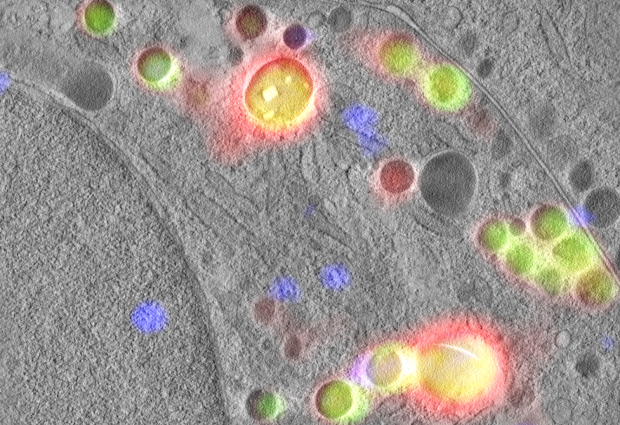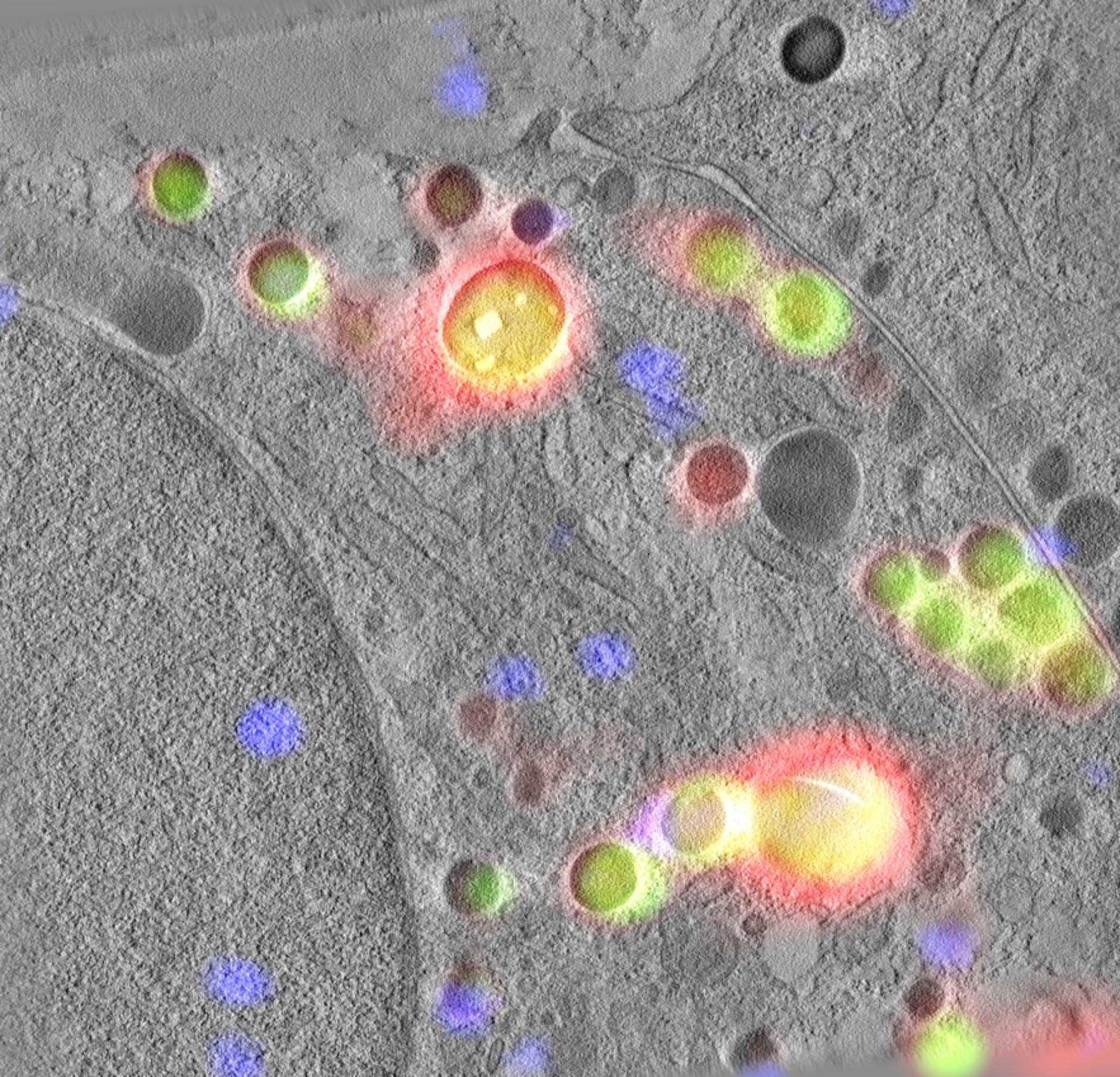
EMBL makes insulin visible

The hormone insulin helps to remove sugar from the blood after a meal. This is important, as in the long term high blood sugar levels damage our bodies. Diabetes of type 1 or type 2 is a direct consequence of a failure to produce sufficient insulin or to release it from the cells in which it is produced.
Insulin is stored in small fluid-filled sacs called granules. When the concentration of blood glucose increases, glucose moves to the cell surface and insulin is released into the bloodstream. This image shows cultivated mouse cells in which insulin is visualised in its longer inactive (yellow) and shorter active forms (green, red). The hormone is labelled by fusing it to two different fluorescent proteins, and thus its location inside the granules becomes evident.
Diabetes affects about 10% of all adults in Europe, and its prevalence is increasing. Drugs used to treat type 2 diabetes stimulate the secretion of insulin from the cells in which it is produced. To test the efficiency of such drugs, researchers like Martina Schifferer, who took this image, apply them to cells in culture and observe whether there’s an improvement in the release of insulin. As the hormone does not have a colour, the Schultz group at EMBL Heidelberg developed techniques to visualise it and estimate its quantity using a combination of light and electron microscopy.

If you have a stunning picture of your science, your lab or your site, you can submit it to mathias.jaeger@embl.de.


